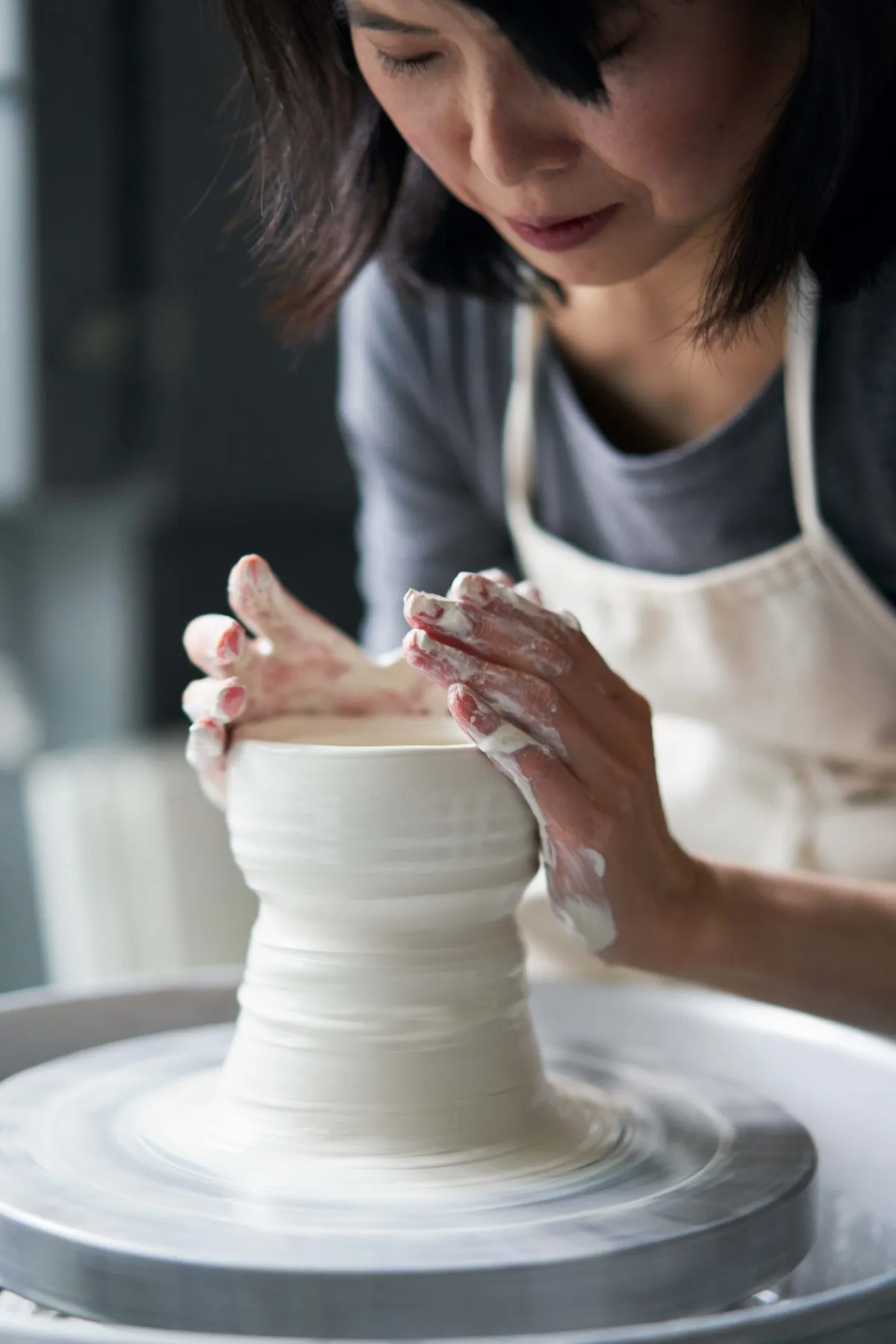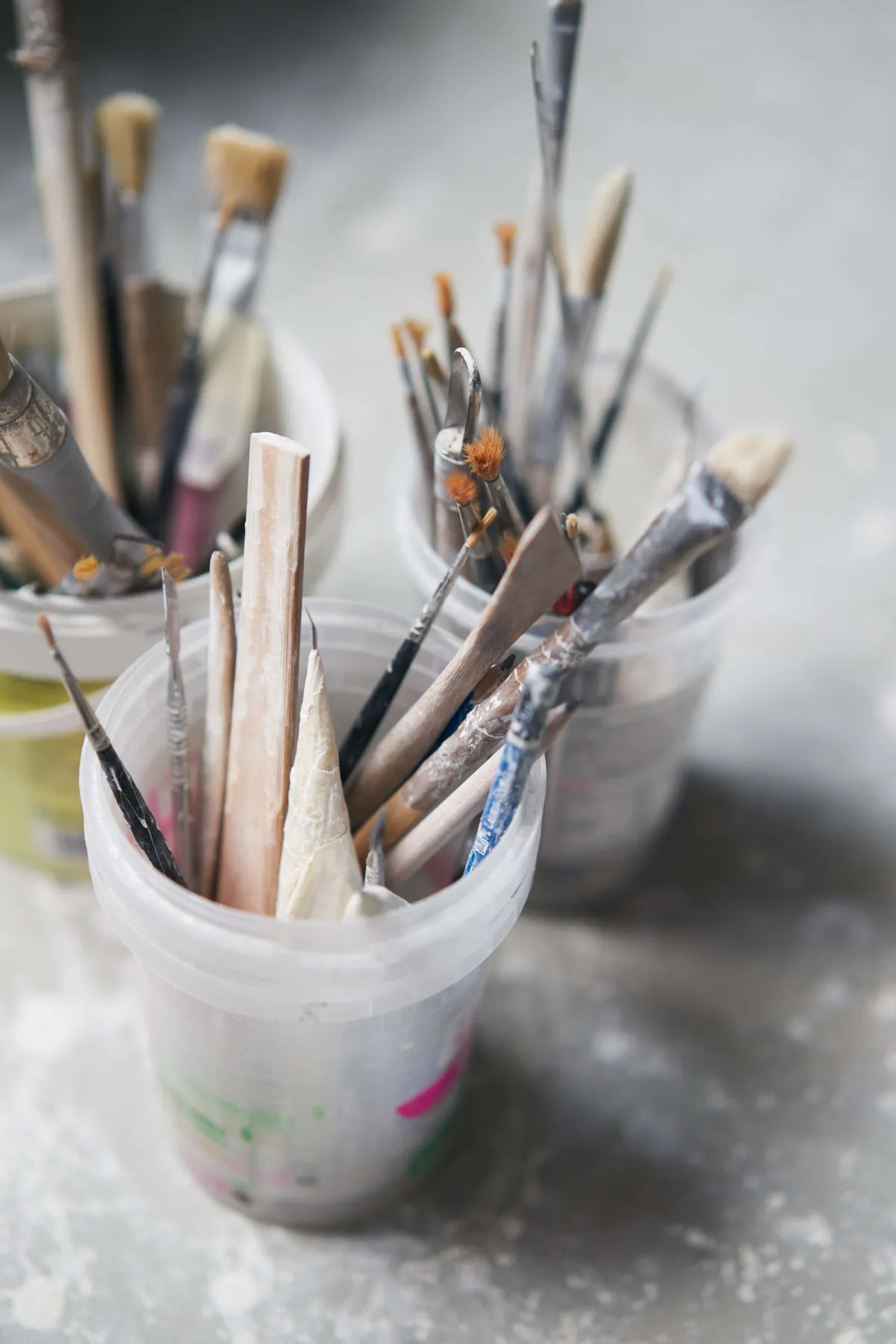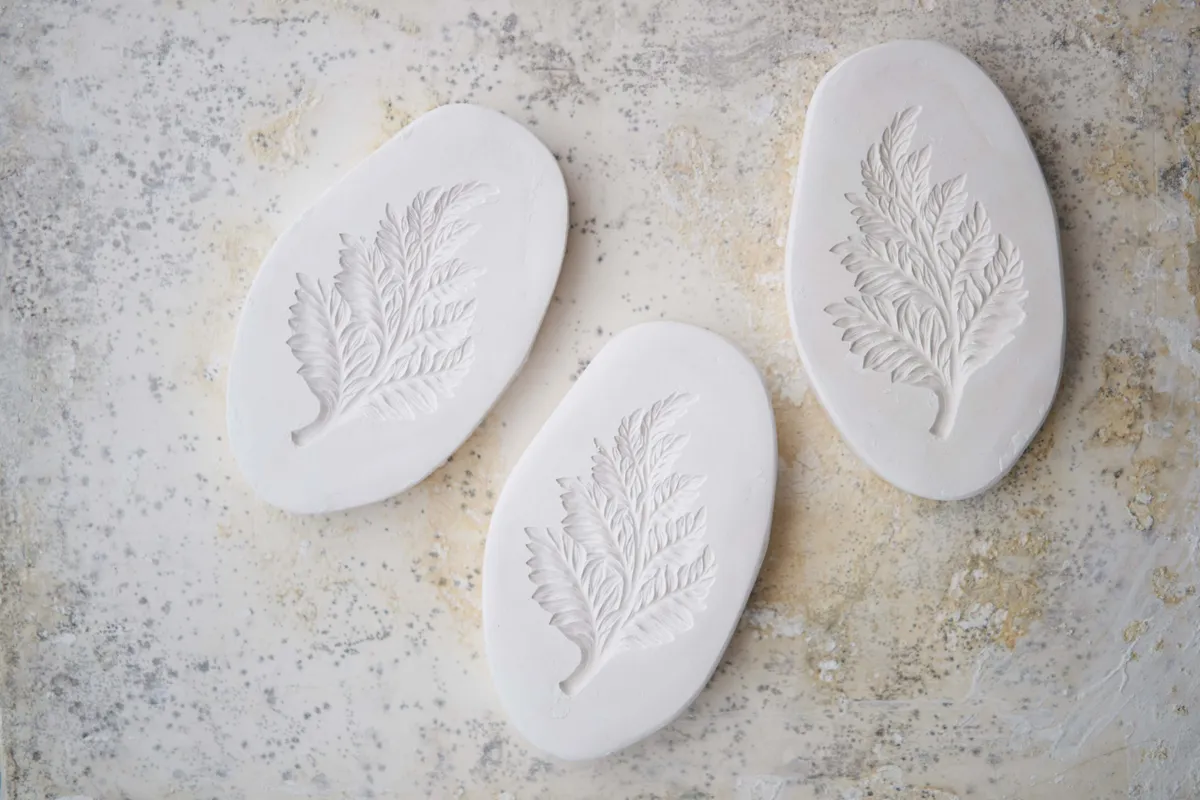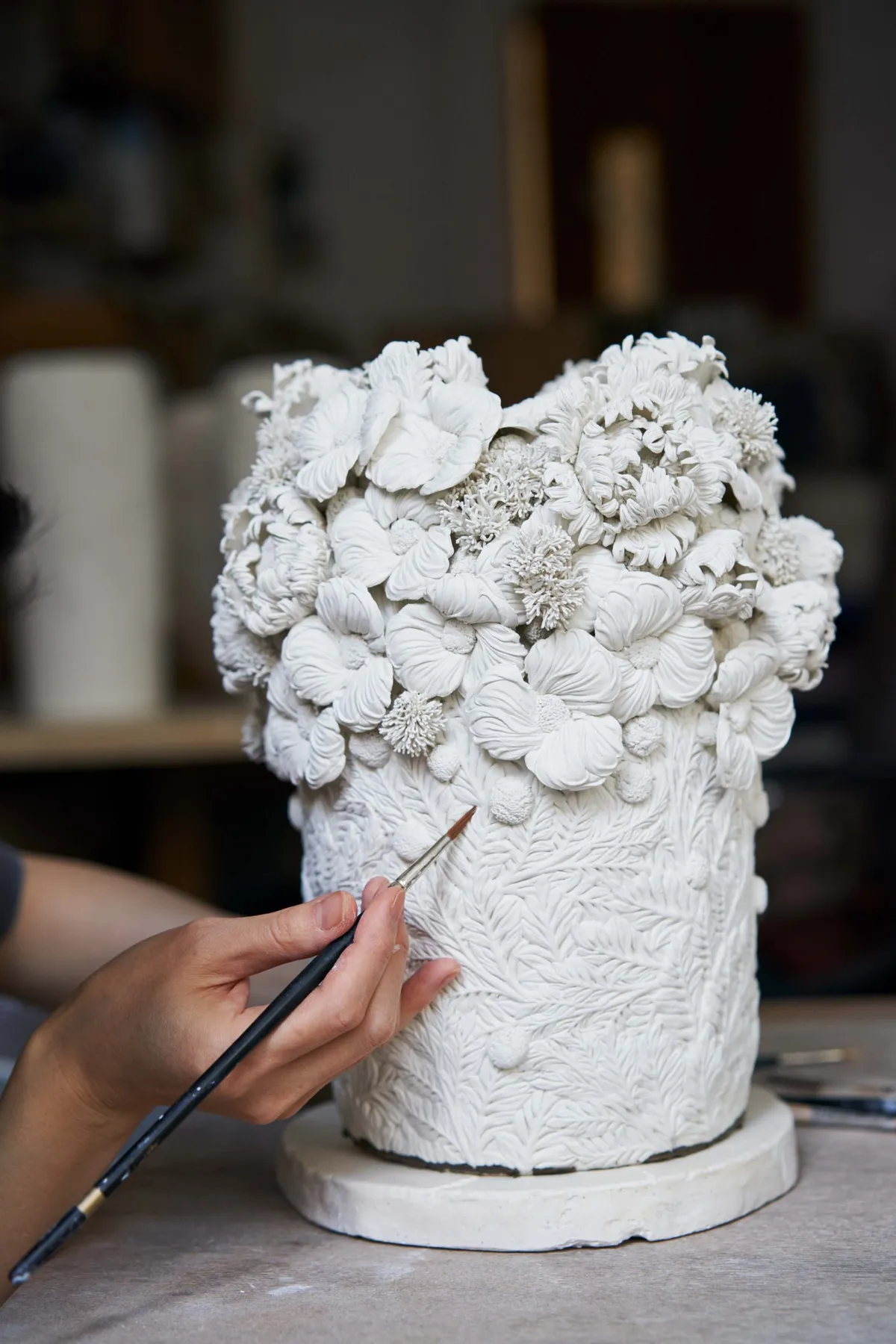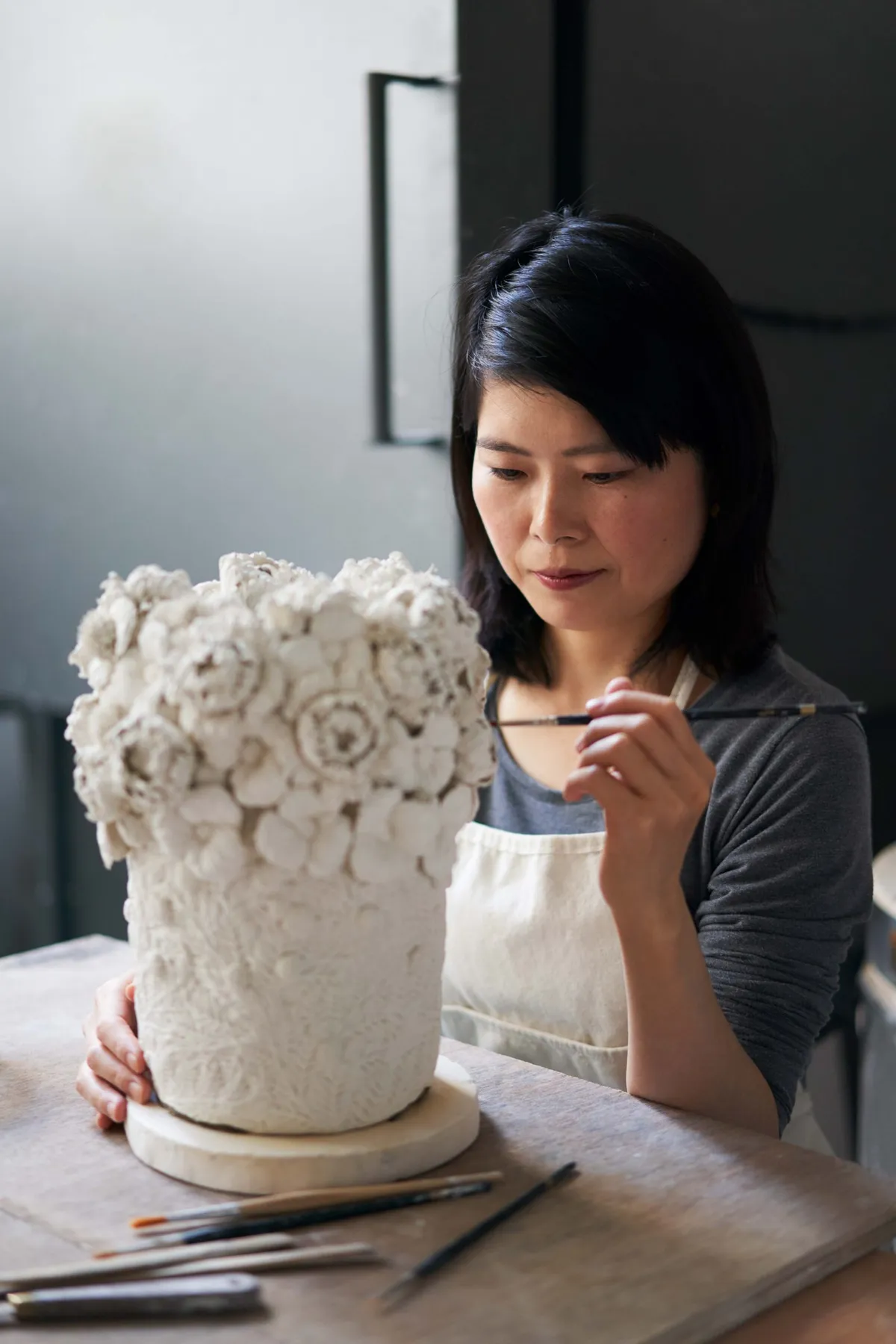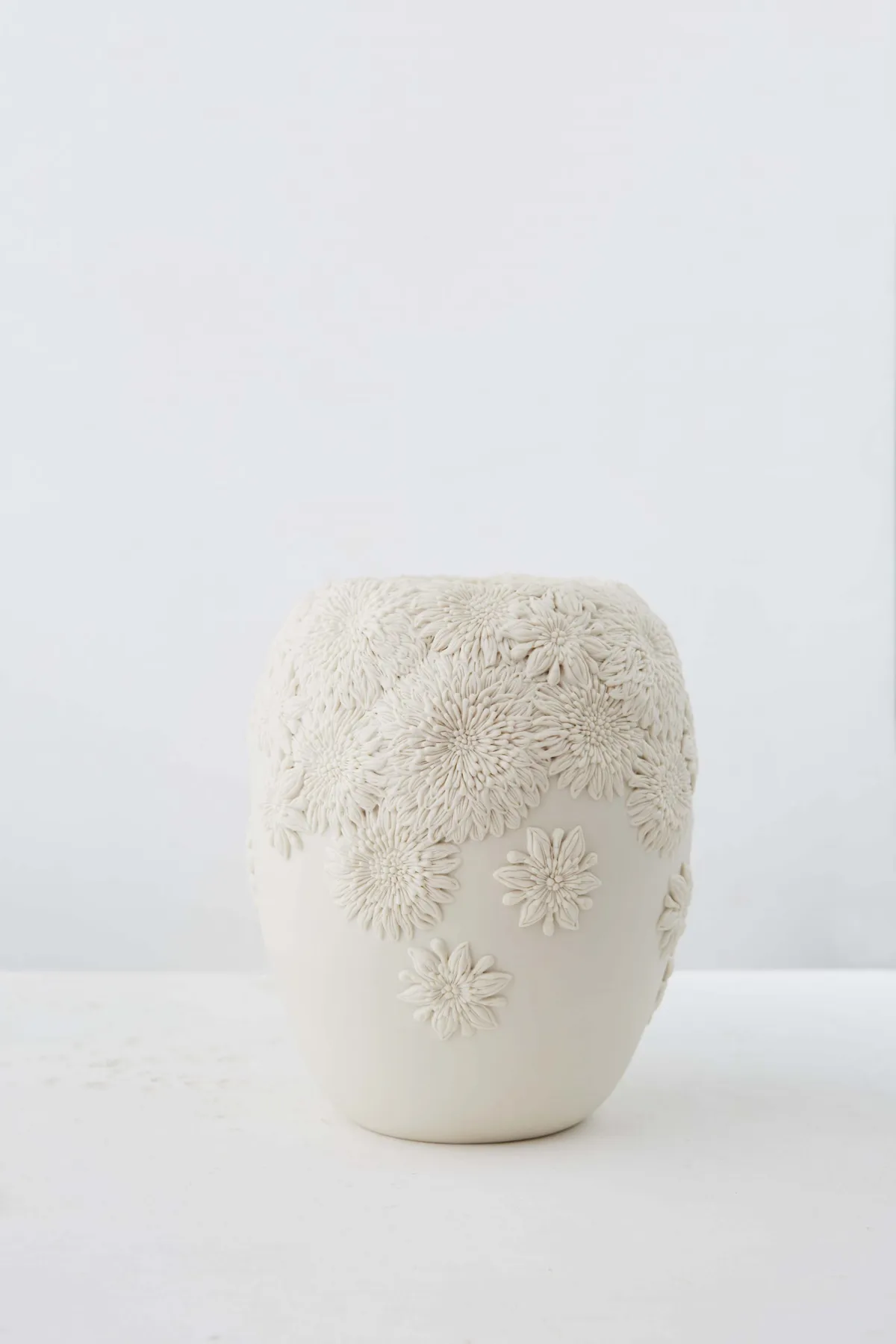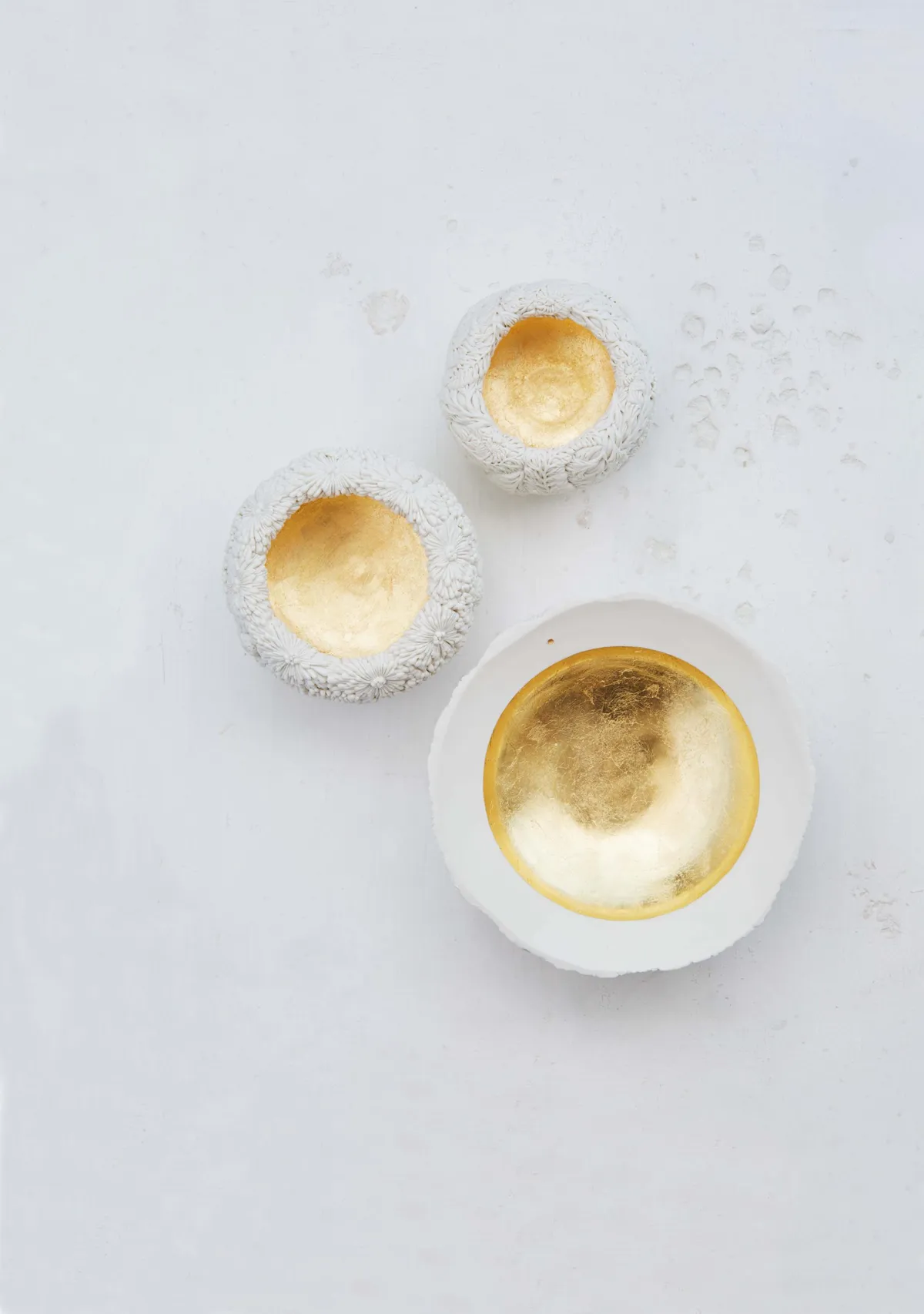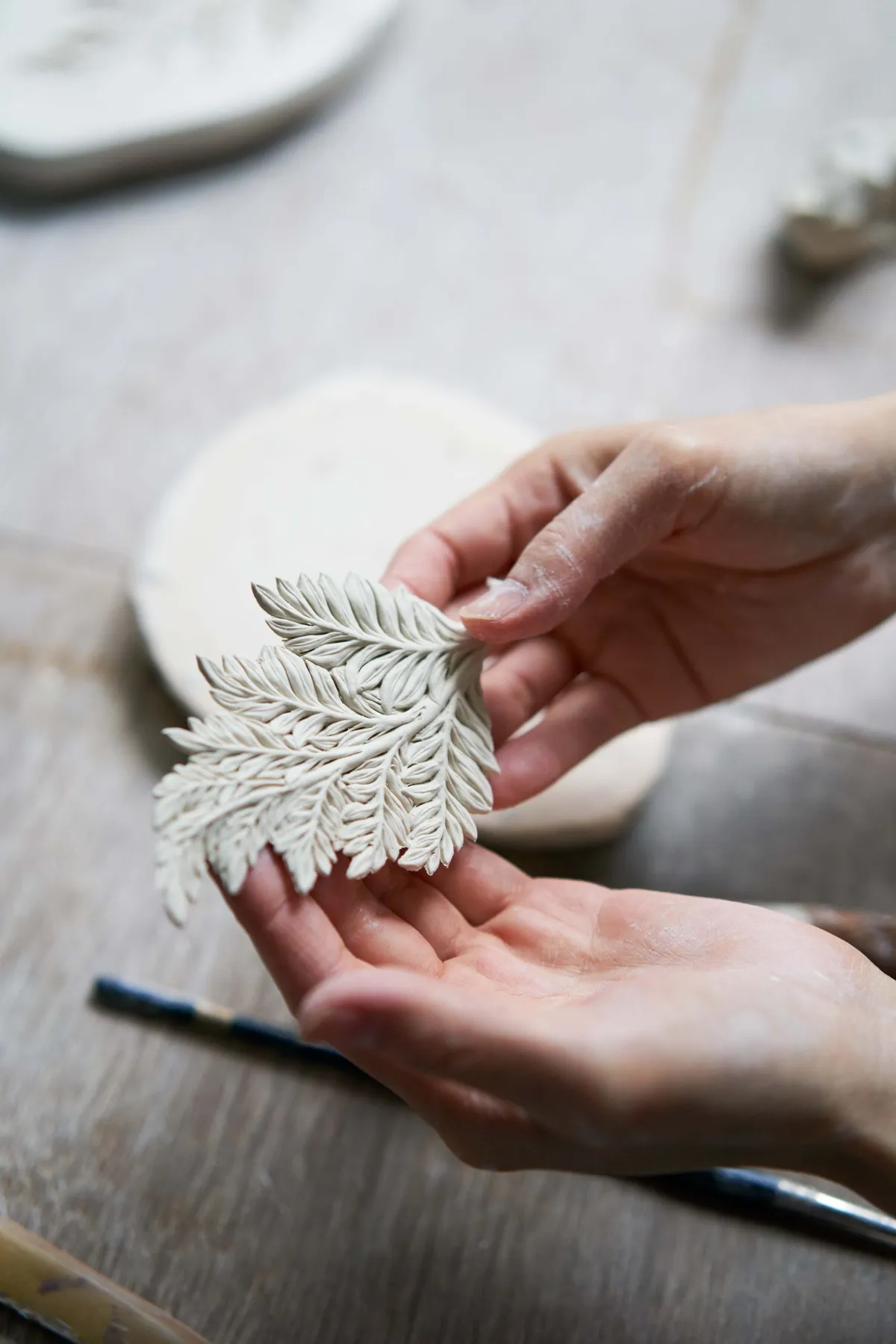Wreathed in petals, leaves and tiny flowerheads, Hitomi Hosono’s astonishing ceramics capture the delicacy of the natural world in layers of intricate, hand-carved porcelain. Her work is a magical fusion of flower and clay so it is unsurprising to find that Hitomi comes from a family of both ceramists and gardeners.
She was born in Japan’s Gifu province, an area known for its kilns. Her grandfather was a tile maker, and her mother is a keen gardener. “She used to grow so many different kinds of flowers and some of the flowers I now use in my work are from her garden.”
Although Hitomi studied ceramics at Kanazawa College of Art, and then at Danmarks Designskole in Denmark, it was not until she undertook an internship at Wedgwood while studying at the Royal College of Art in London that she worked out how best to combine her two passions. This was when she came across ‘sprigging’, a technique used by Josiah Wedgwood to create an extra layer of relief pattern by applying separate pieces of clay to a vase.
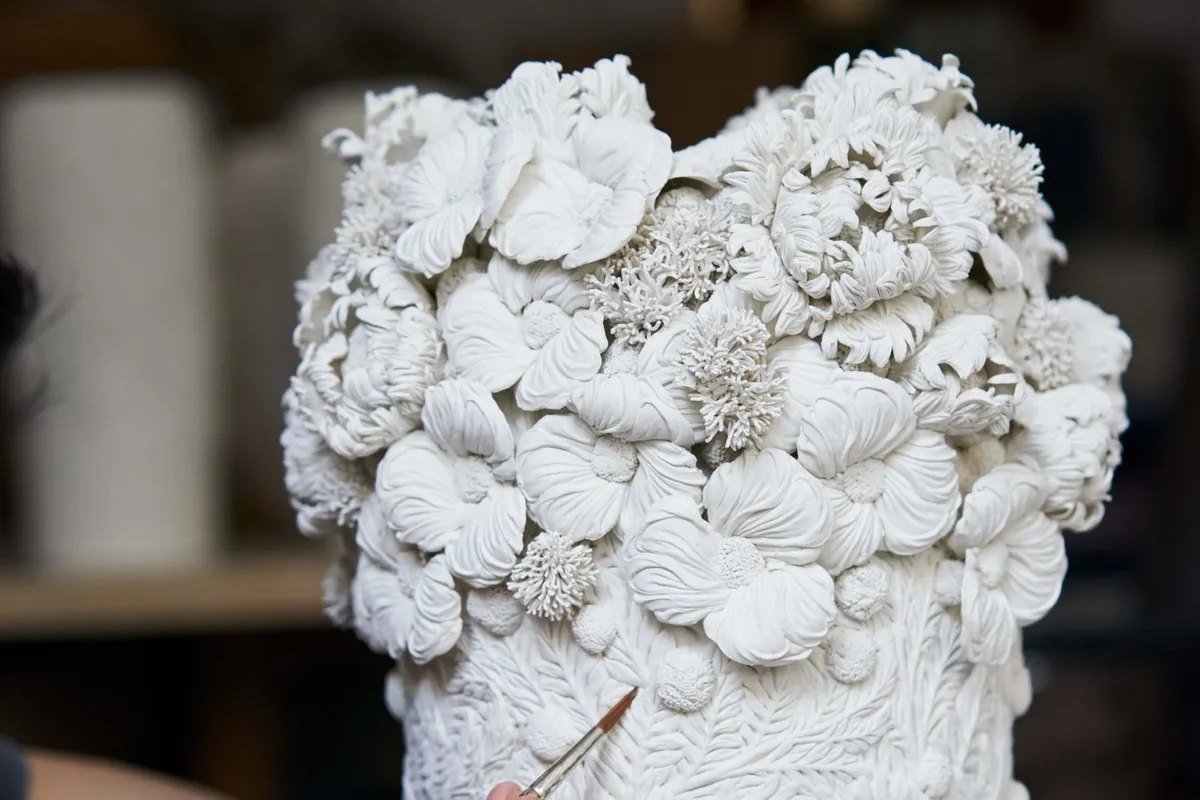
Above: Hitomi attaches the sprigs by applying water to the surface of the vase with a brush to create a slip, which then acts as a type of clay glue.
Hitomi realised that instead of just applying one or two sprigs, she could cover an entire piece to create a surface encrusted with plant forms like, she says, “the multitude of green leaves that obscure the branches of a tree”. It was a career-defining moment, and now, 12 years on, she has built up an international reputation. She won the Jerwood Makers Open in 2014, and her work is on show in museums such as the V&A and the British Museum.
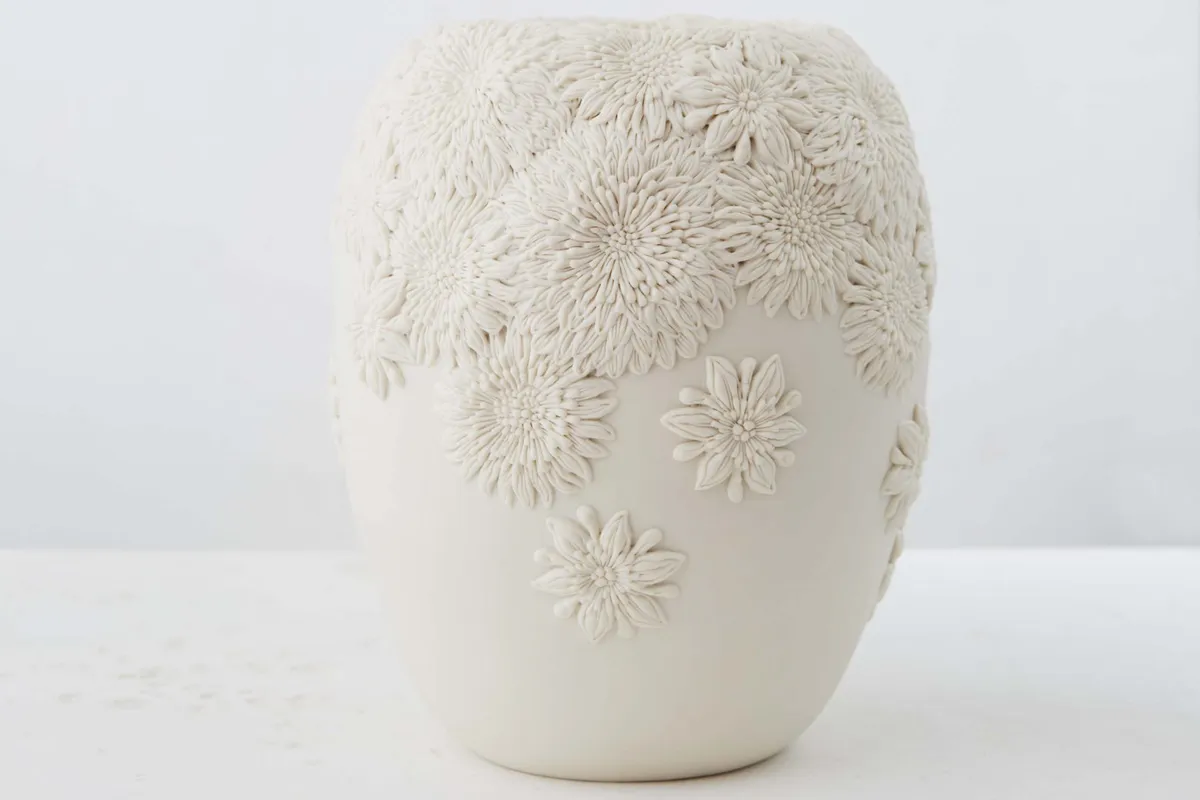
Above: Kiku Vase: chrysanthemum (kiku) flowers are among Hitomi’s favourite flowers; her family used to pick them from their garden to put on their Buddhist altar as an offering.
Her vessels start off as simple, hand-thrown pots, which are then covered with individual sprigs. These are made of porcelain, a material that Hitomi calls “wondrous” as she loves the way she is able to etch complex patterns into its smooth surface. The sprigs are formed in moulds made by Hitomi and then given extra carved details before being carefully applied to the vase. She may use several hundred sprigs to make a single piece and her fabulous Large Feather Leaves Bowl in the British Museum is covered with a staggering 1,000 individual leaves.
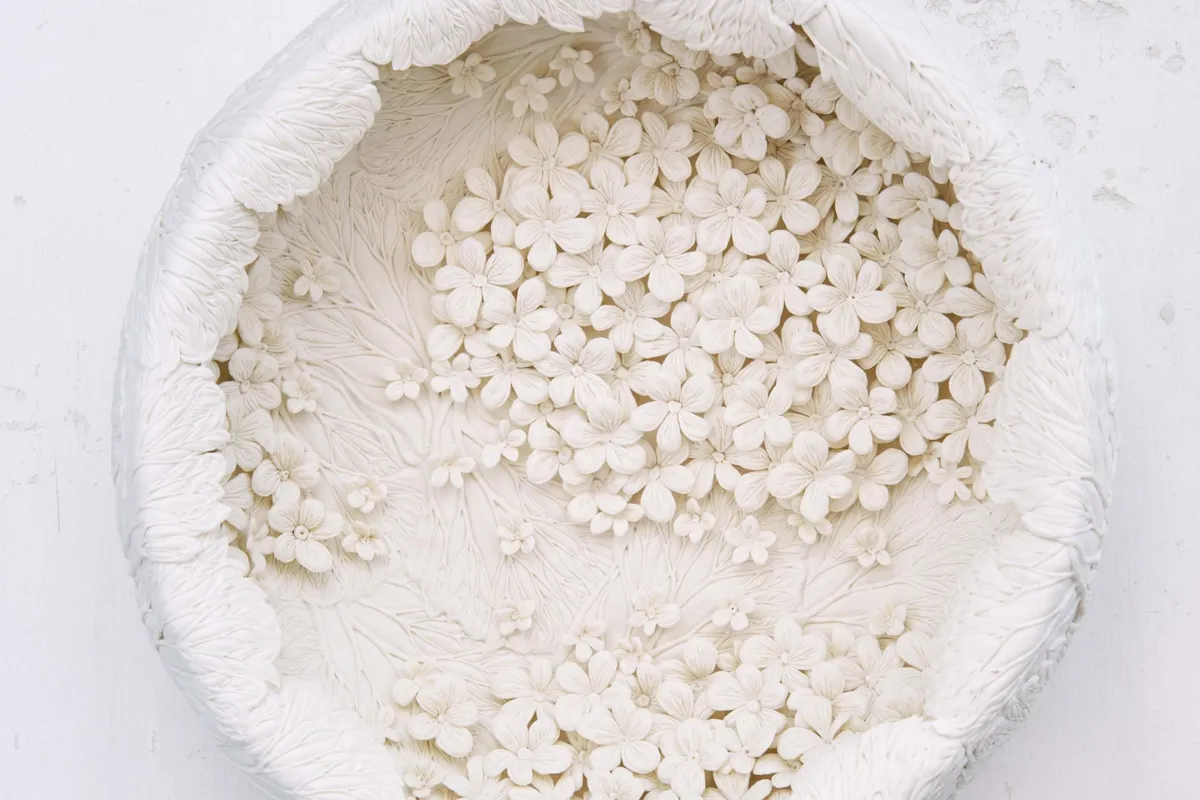
Above: Keyaki and Sakura Pool, a vase decorated with delicate cherry blossoms (sakura) and leaves from the keyaki tree (Zelkova serrata) that grows near Hitomi’s home in Japan.
Making the sprigs is the most difficult part of the process as the clay can only be worked when it is exactly the right consistency: “You have to treat the porcelain like a dry biscuit – it’s a very difficult material but I enjoy the challenge.” Drying the finished vessels is equally tricky and must be done slowly to avoid any cracking when they are fired. It can take months and Hitomi’s airy Finsbury Park studio is full of plastic-swathed cardboard boxes, each one home to a slowly drying work of art. When they are ready, the vases are fired just once and then left unglazed and uncoloured so nothing can detract from their densely carved surfaces.
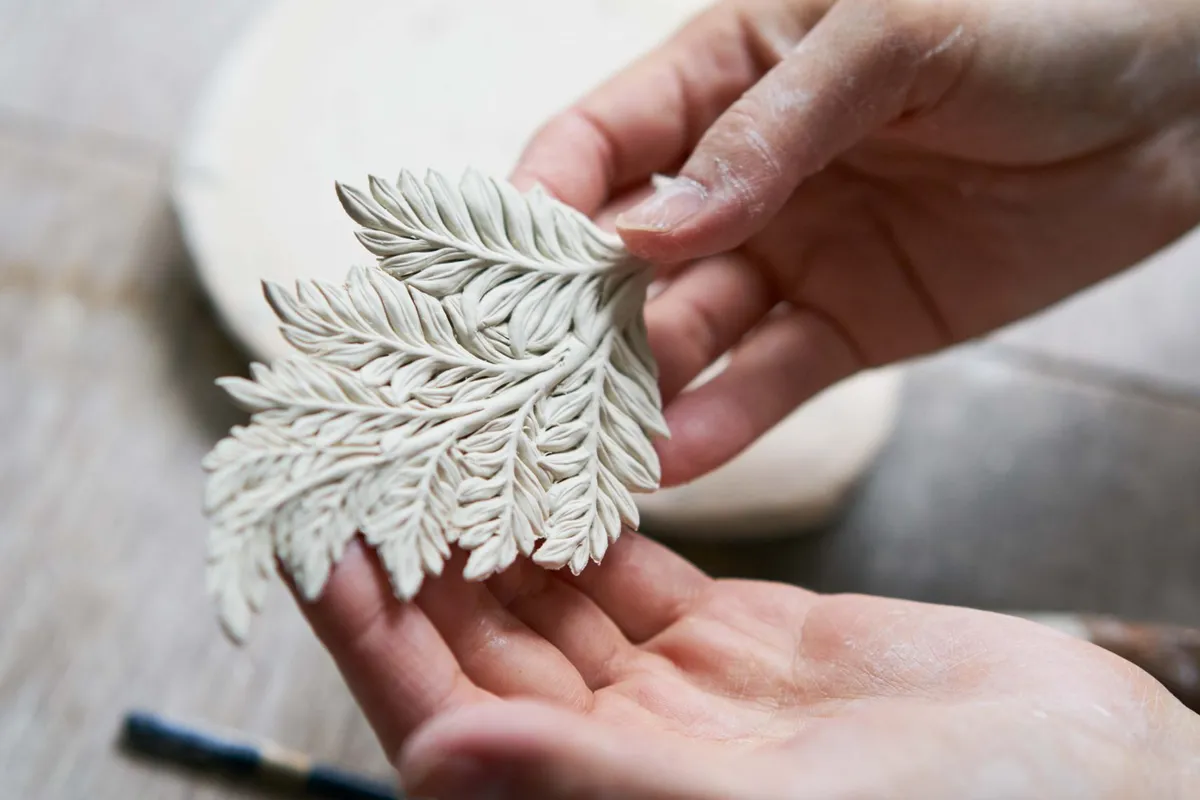
Above: Each sprig is slightly different as Hitomi carves extra detail into each one once she has taken it out of the mould; she then carefully bends them to create a sense of movement.
Hitomi is inspired by plants she sees around her, but flowers such as camellias, chrysanthemums and cherry blossom that remind her of Japan are particular favourites. Surprisingly she doesn’t photograph or sketch them, but explores their volume and texture by touch. “This information is unconsciously stored in my mind and when I touch the clay it unconsciously comes back through the hand,” she says. And it is this instinctive ability to translate natural forms into vessels of great precision and poetry that gives Hitomi’s ceramics their extraordinary impact.
USEFUL INFORMATION Hitomi Hosono is represented by the London gallery, Adrian Sassoon (adriansassoon.com).
